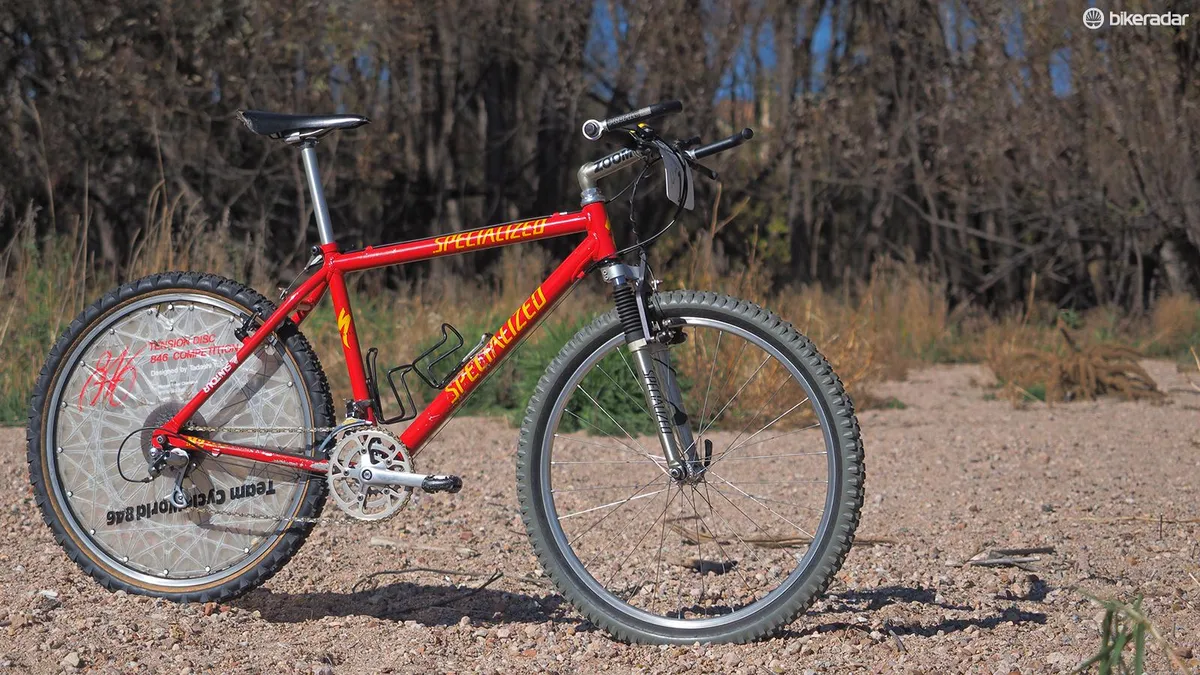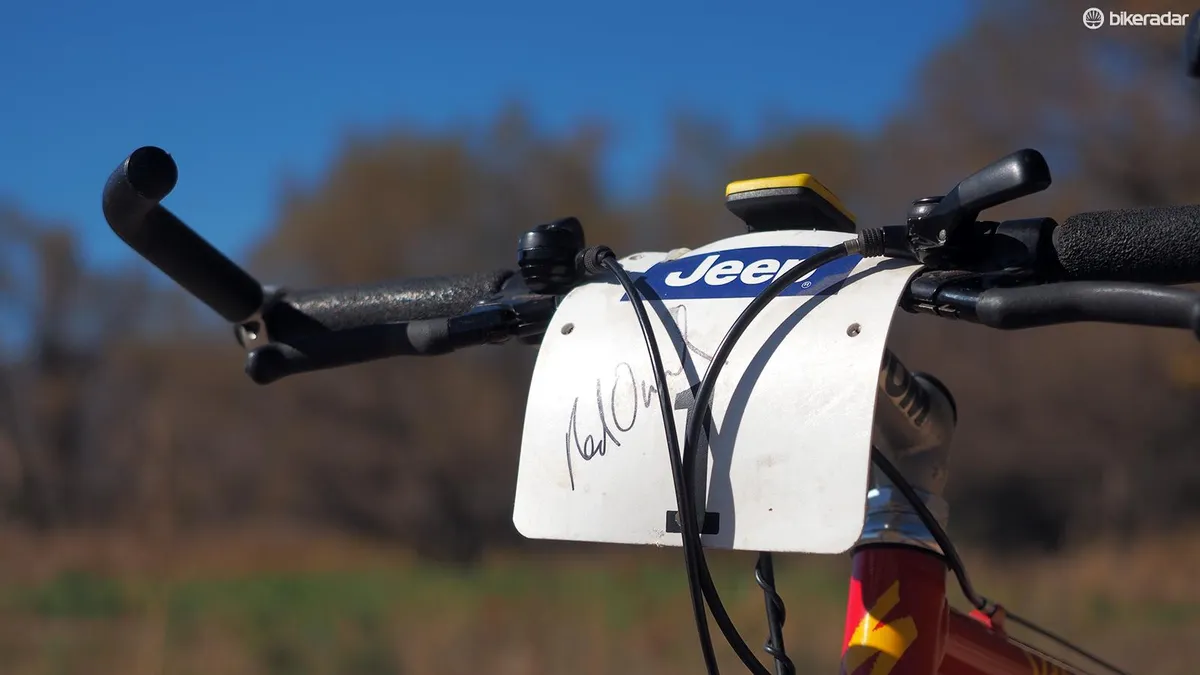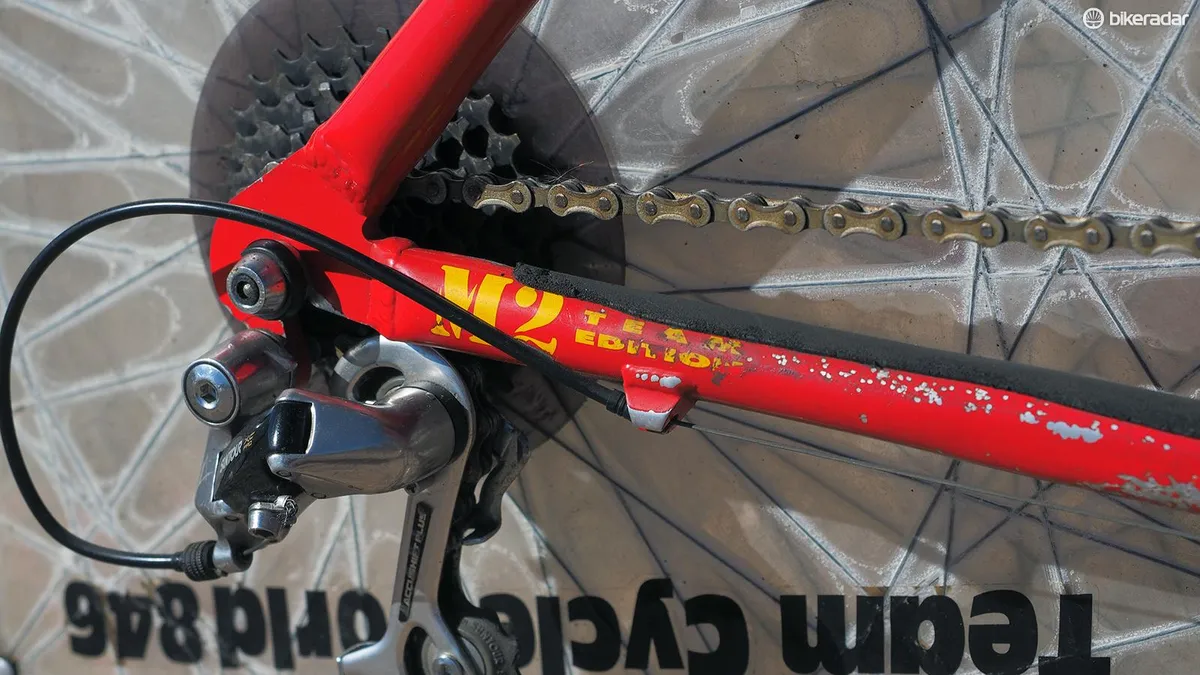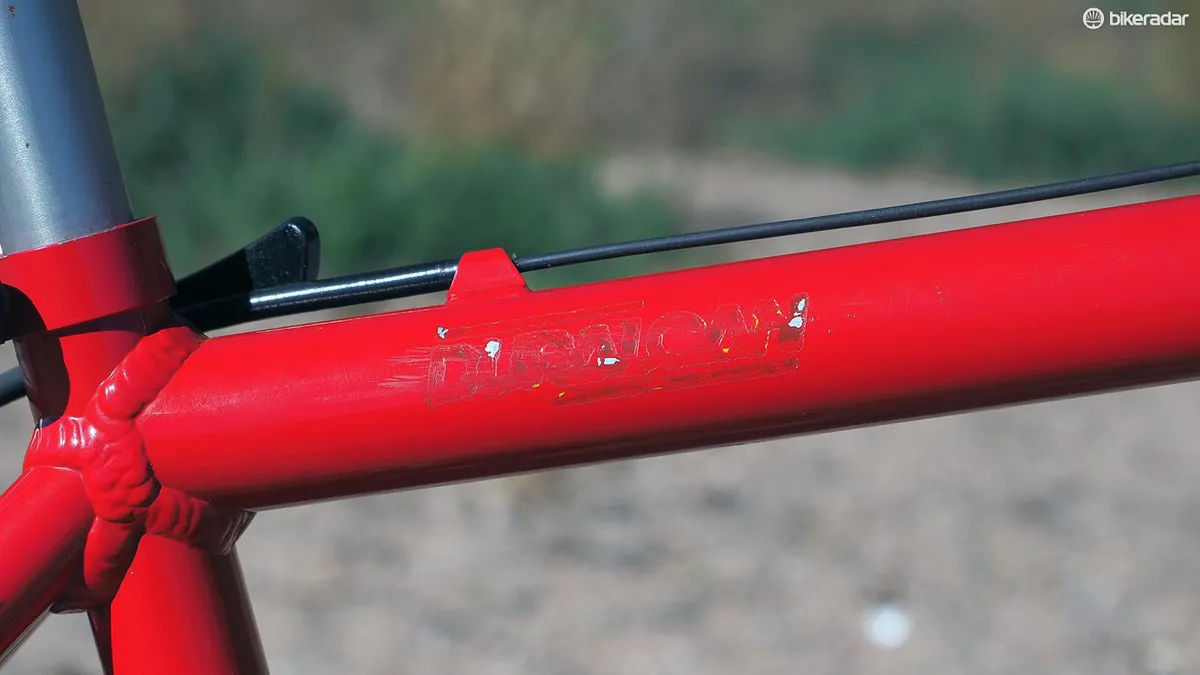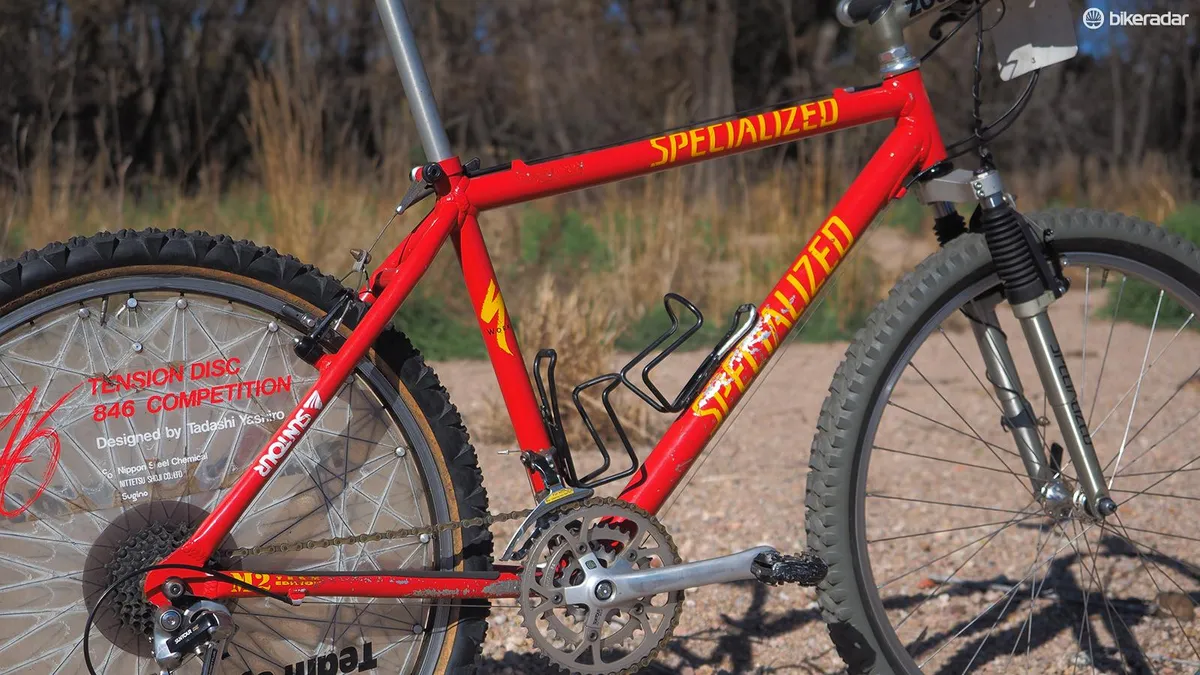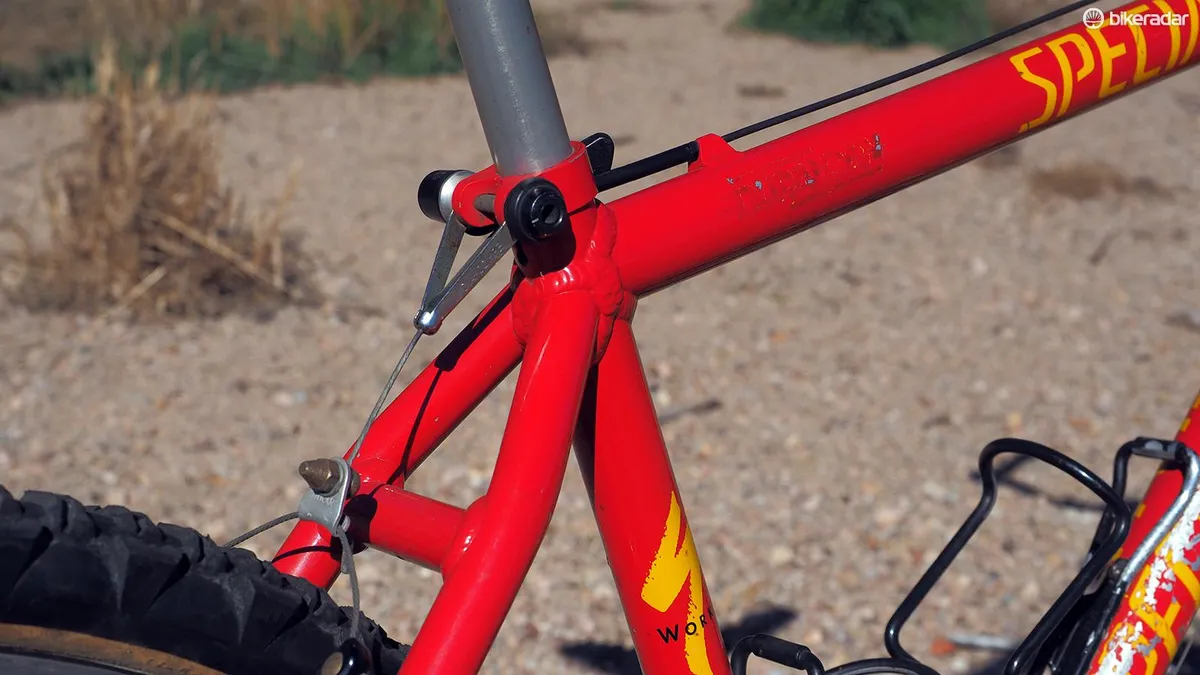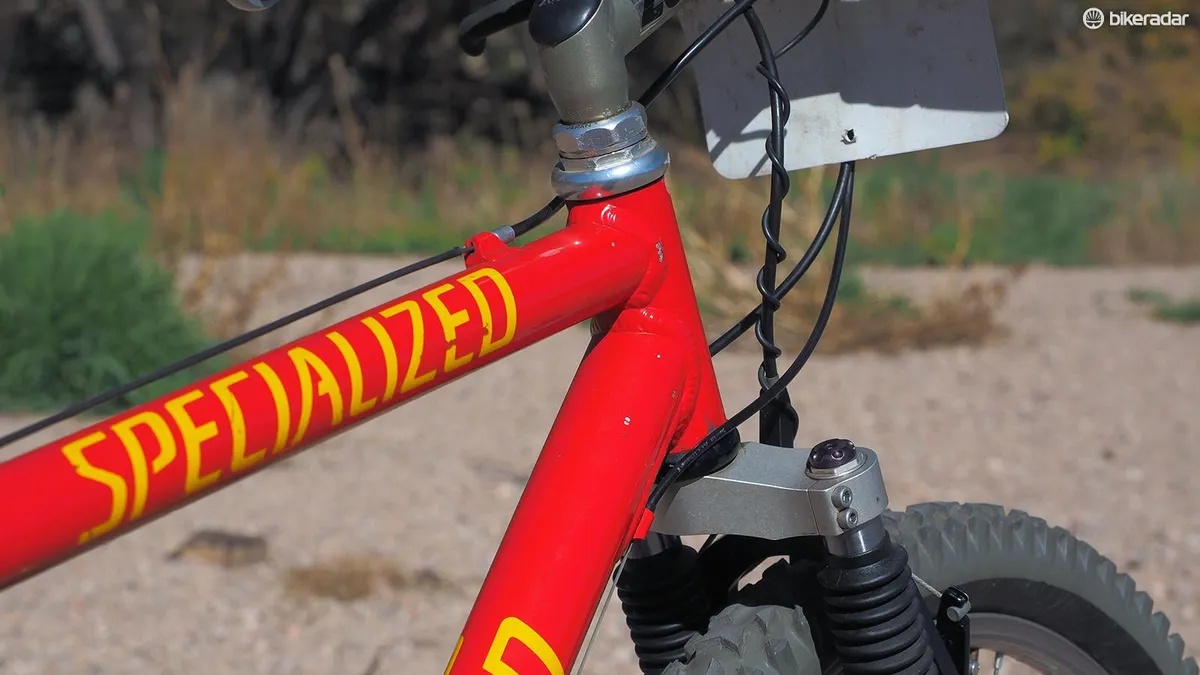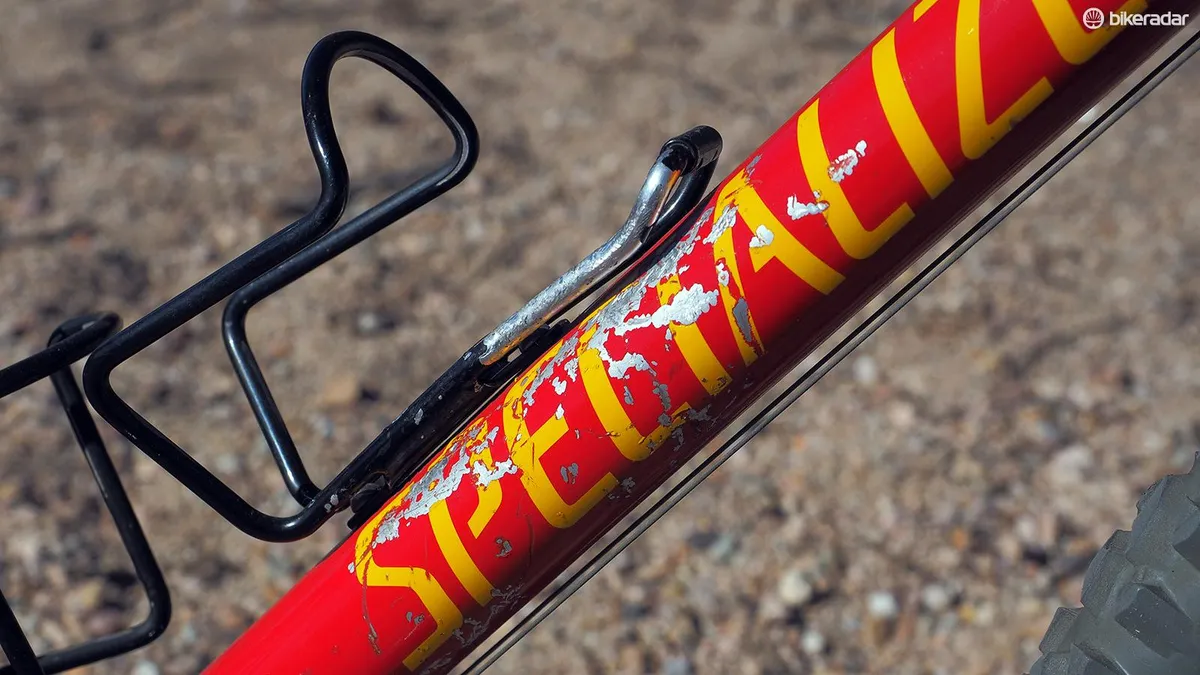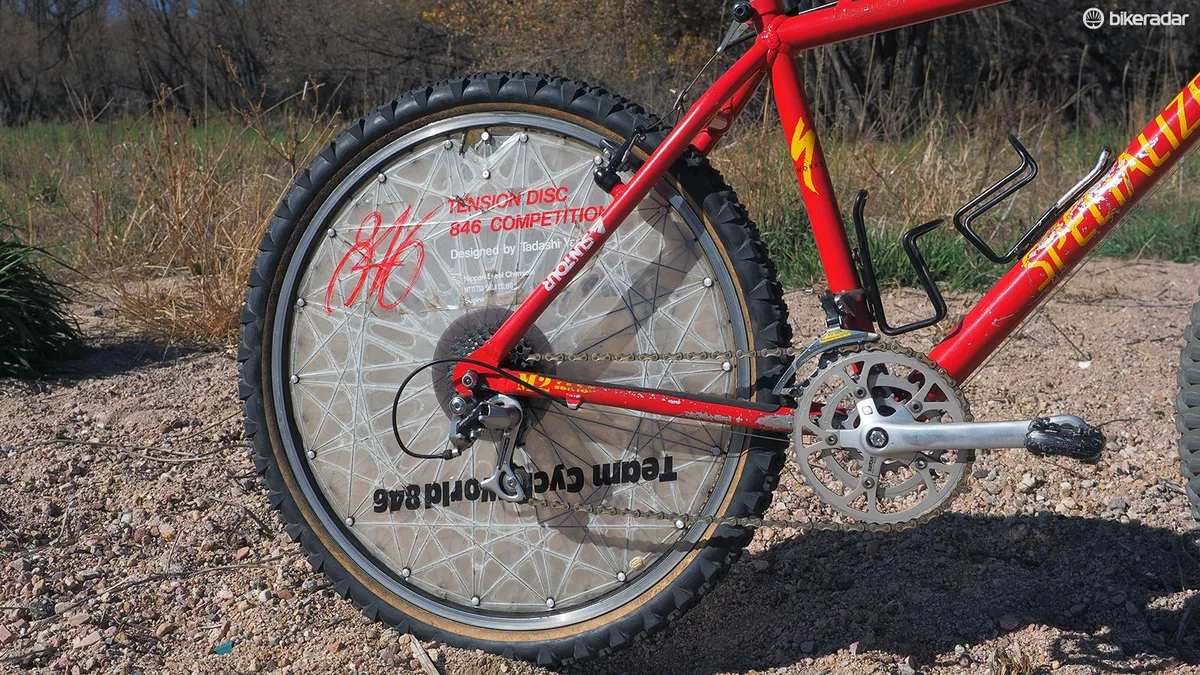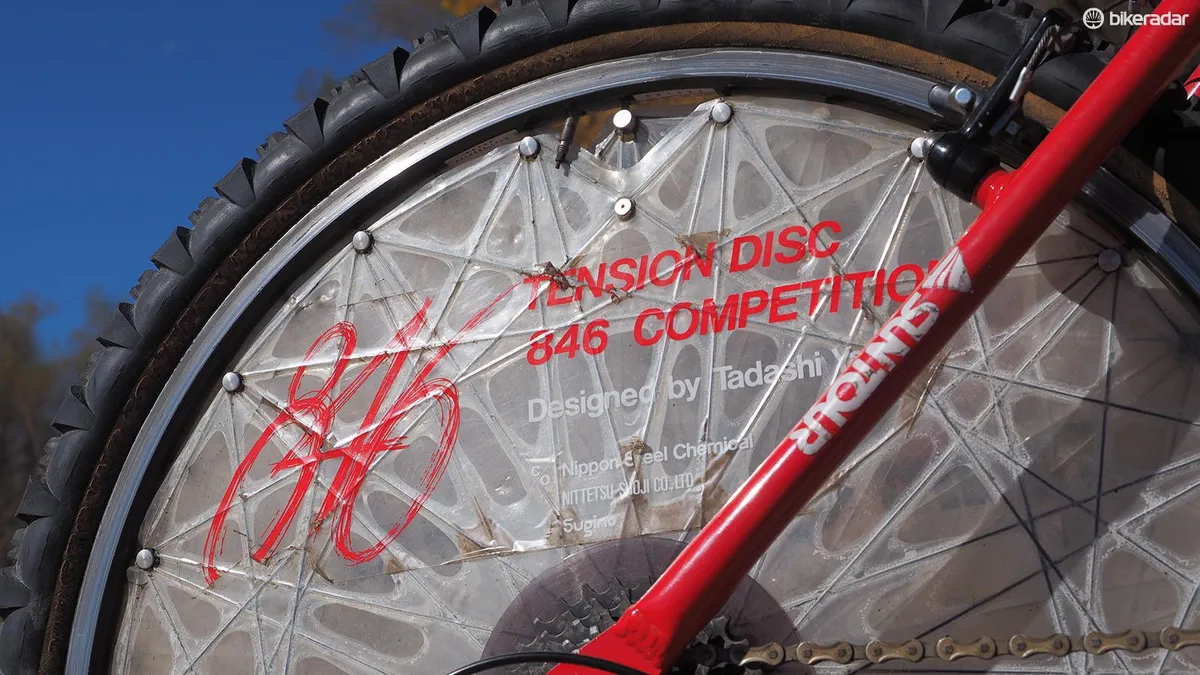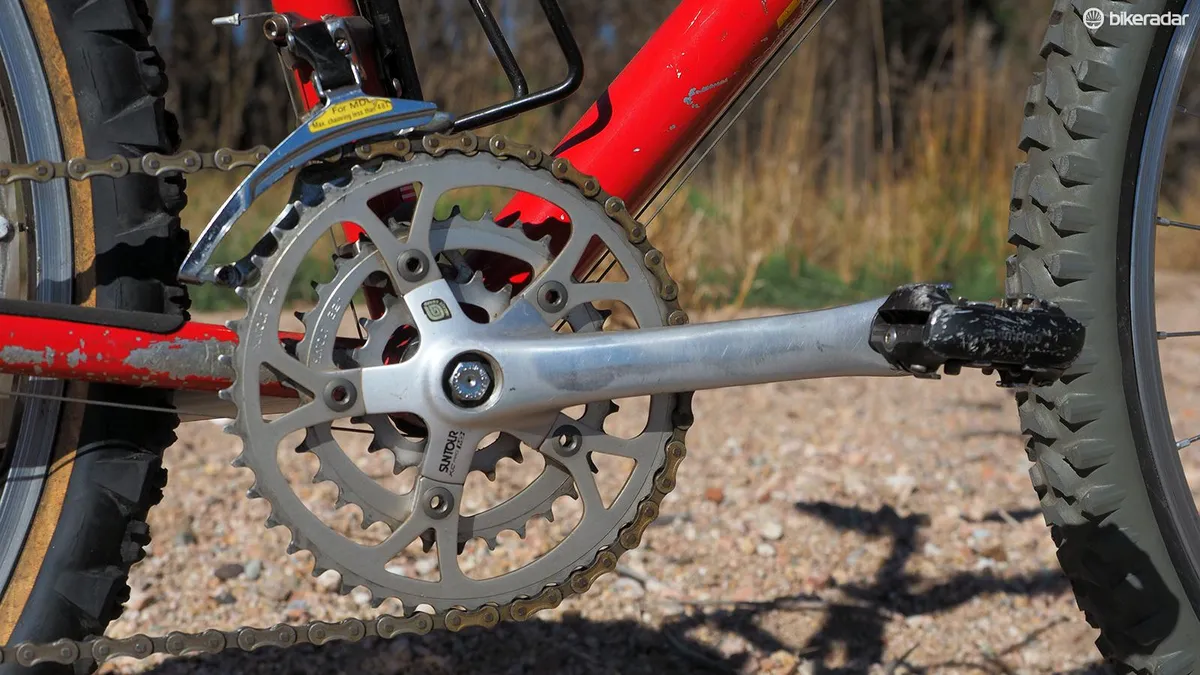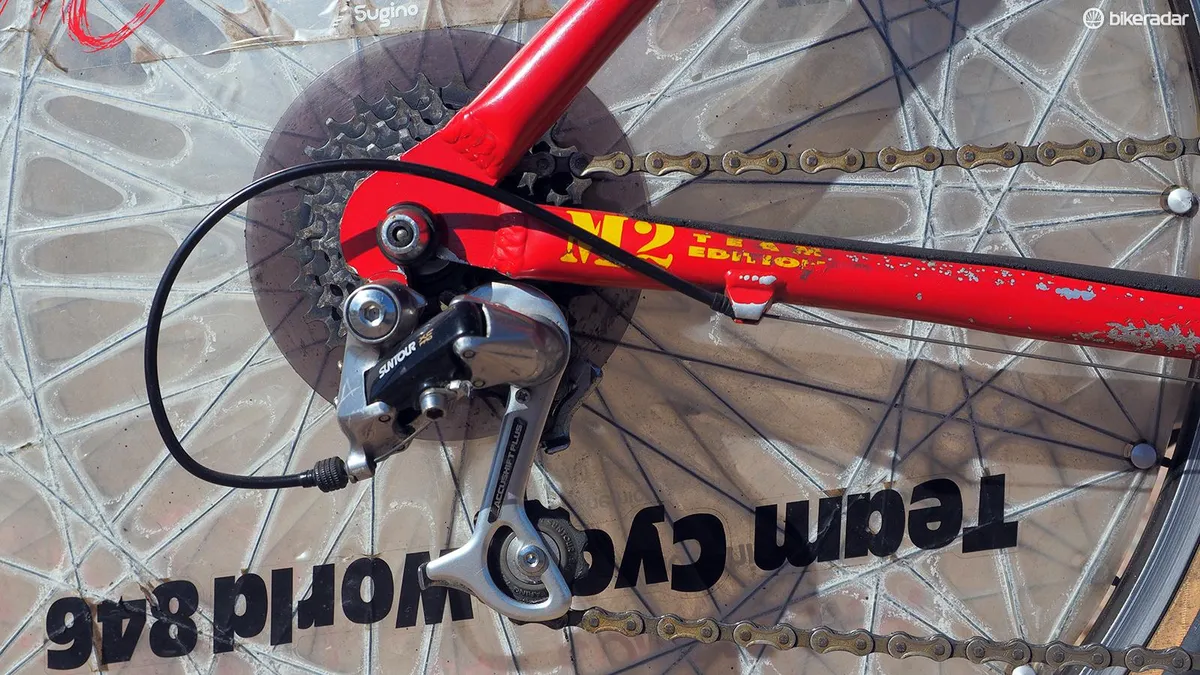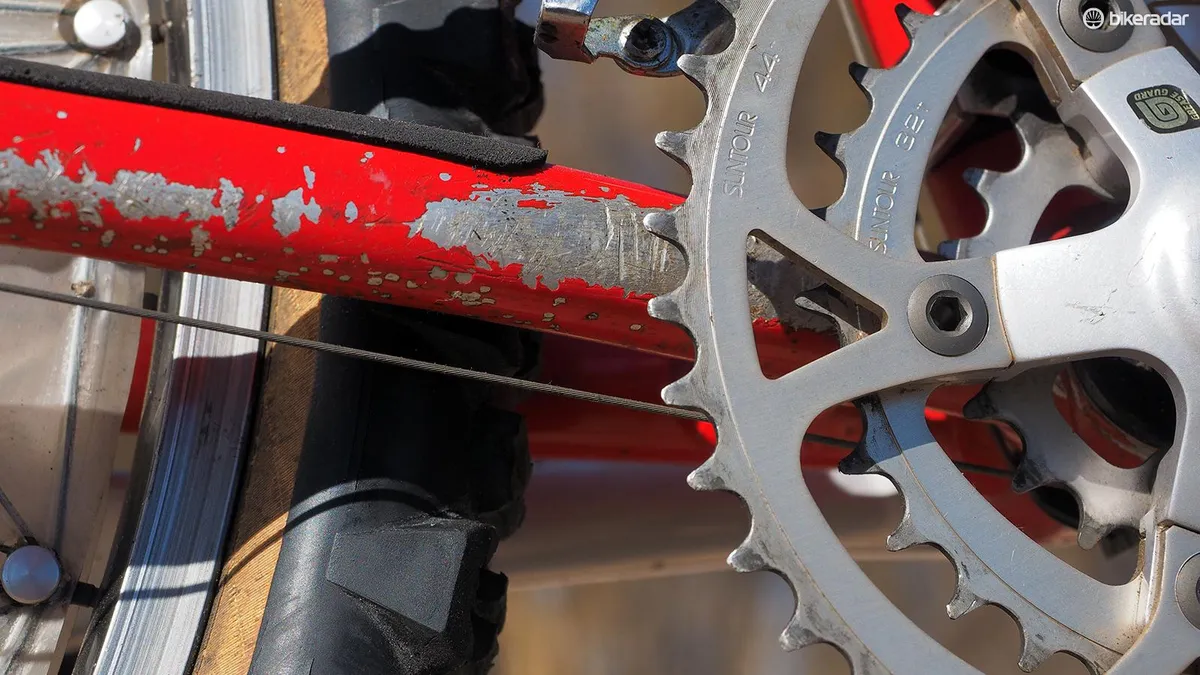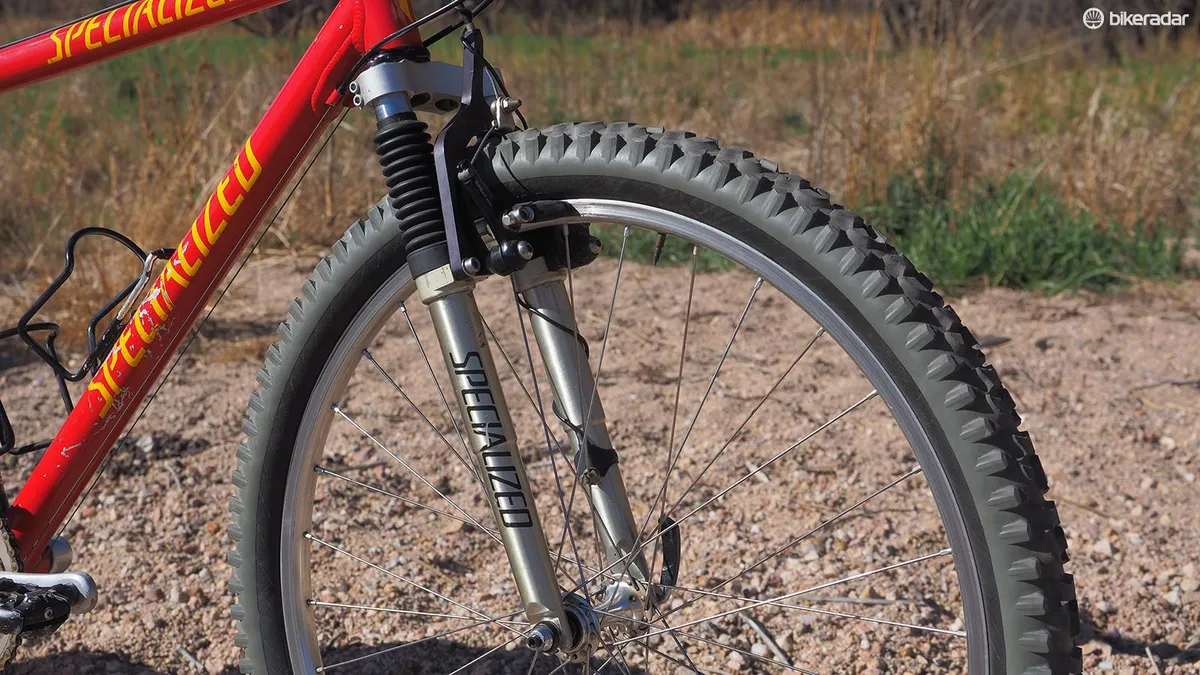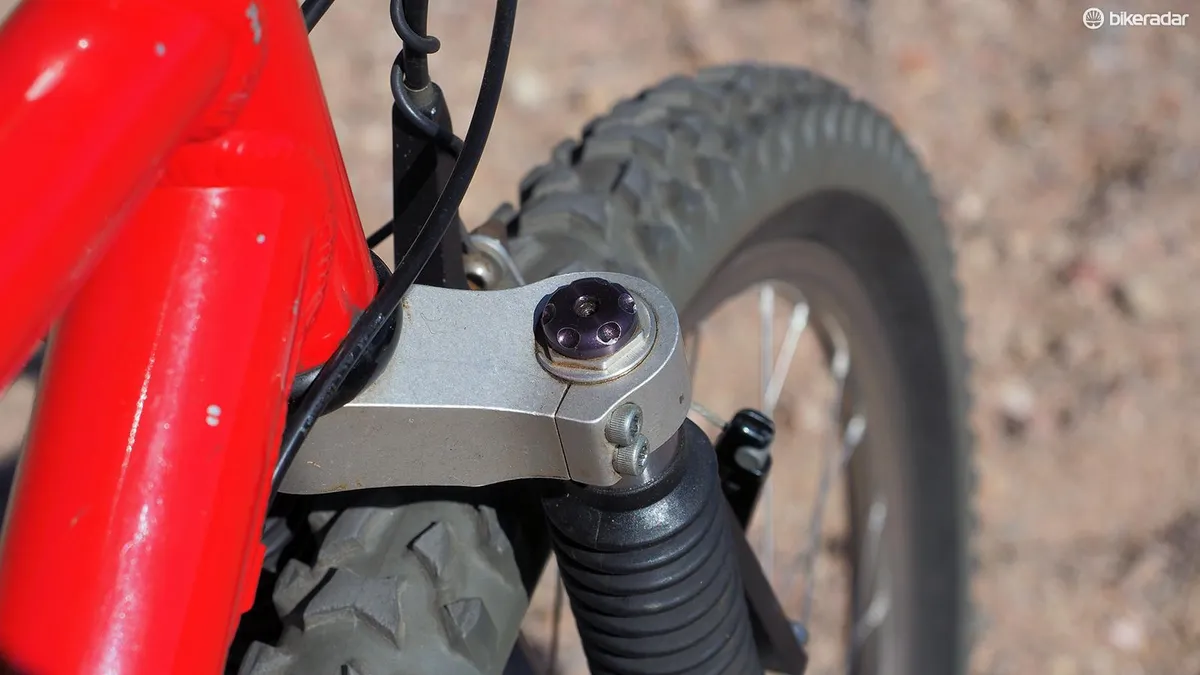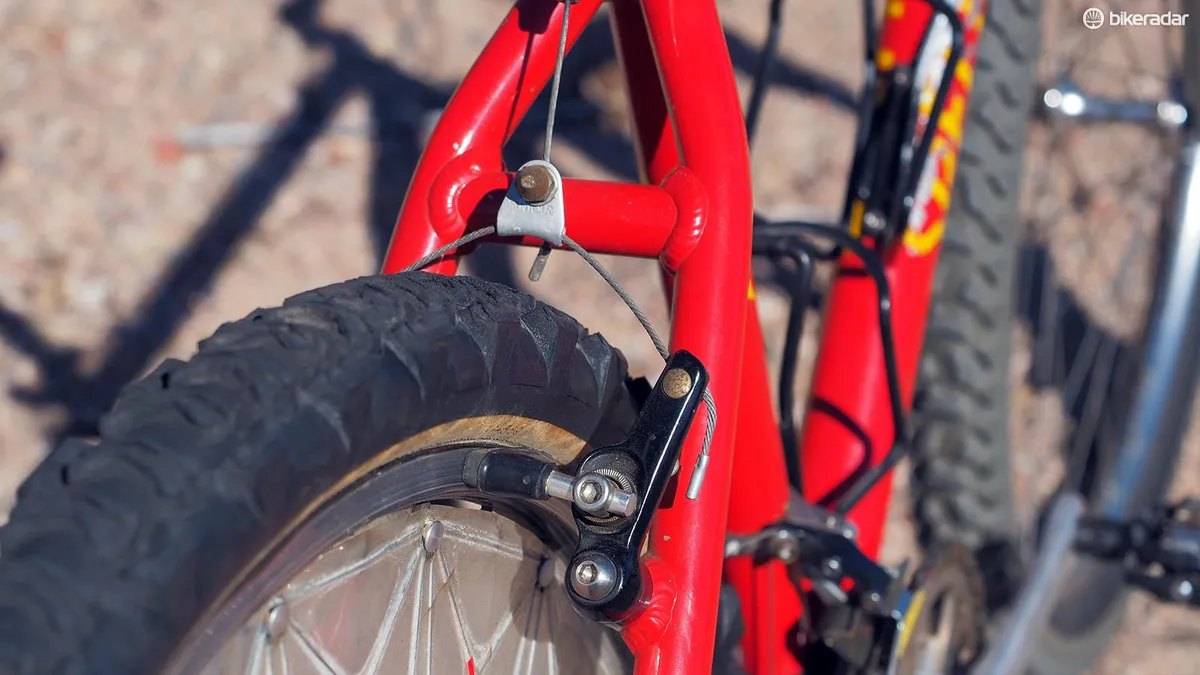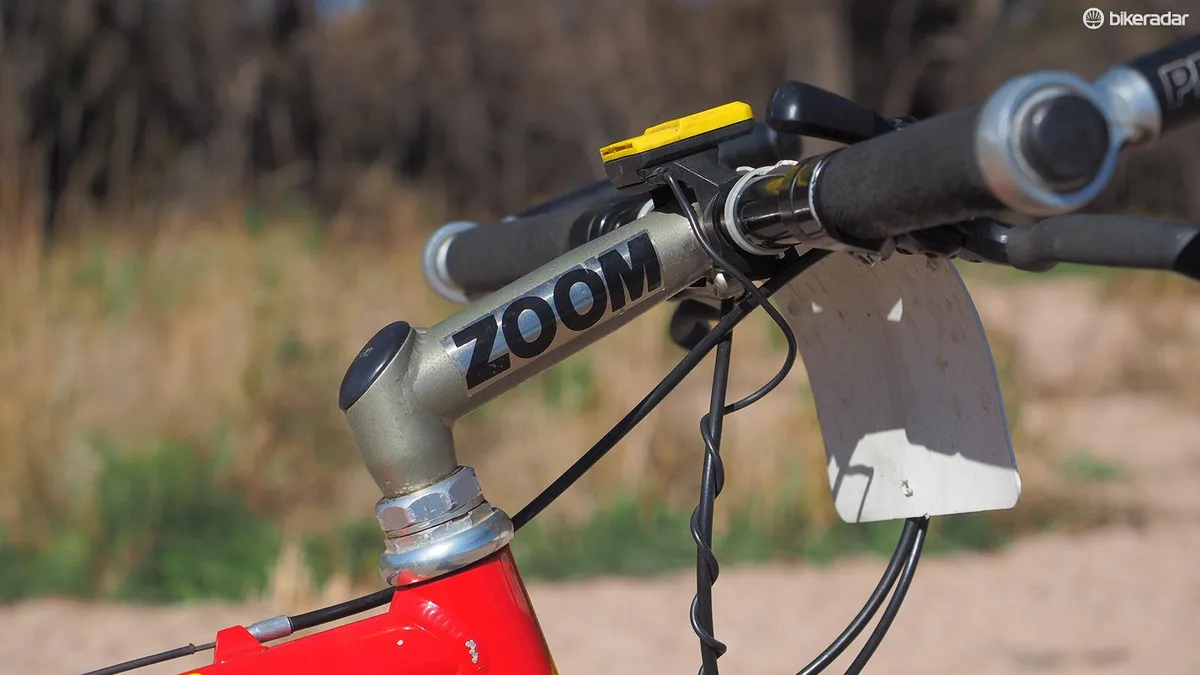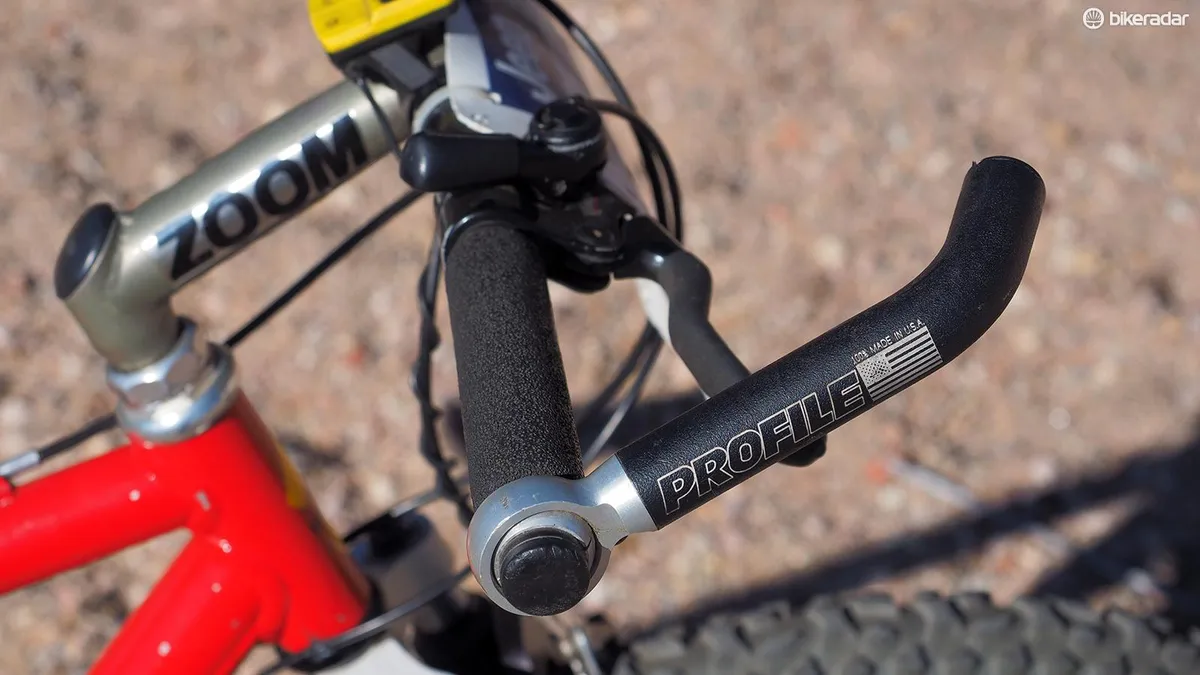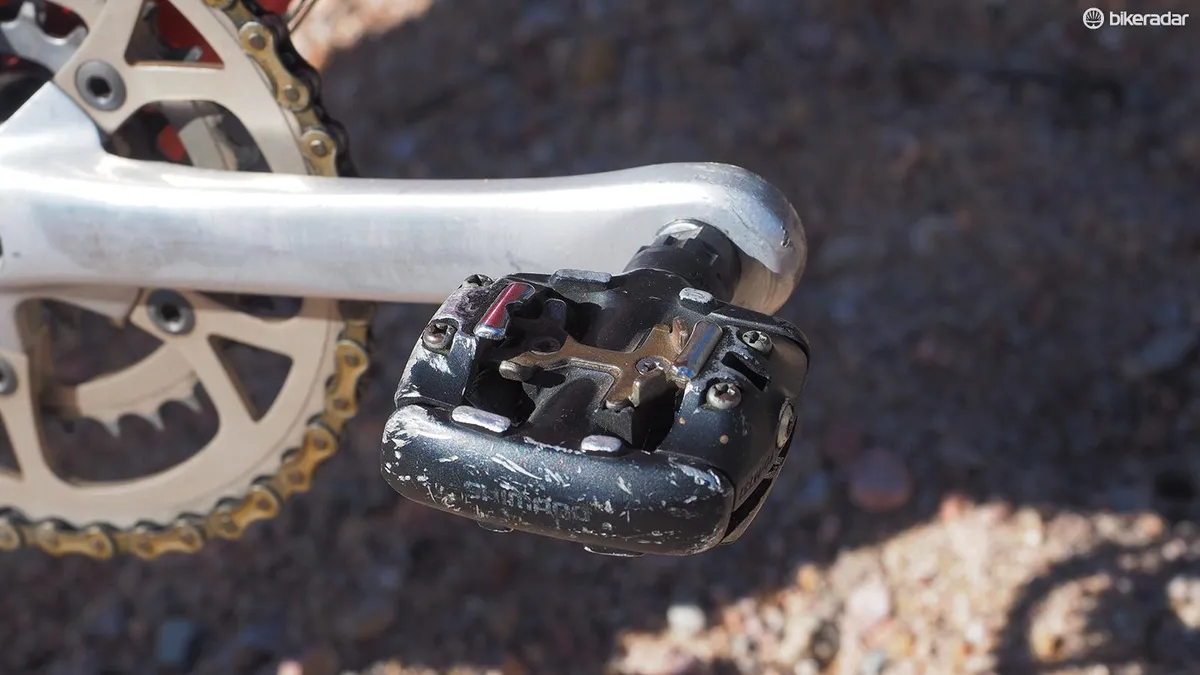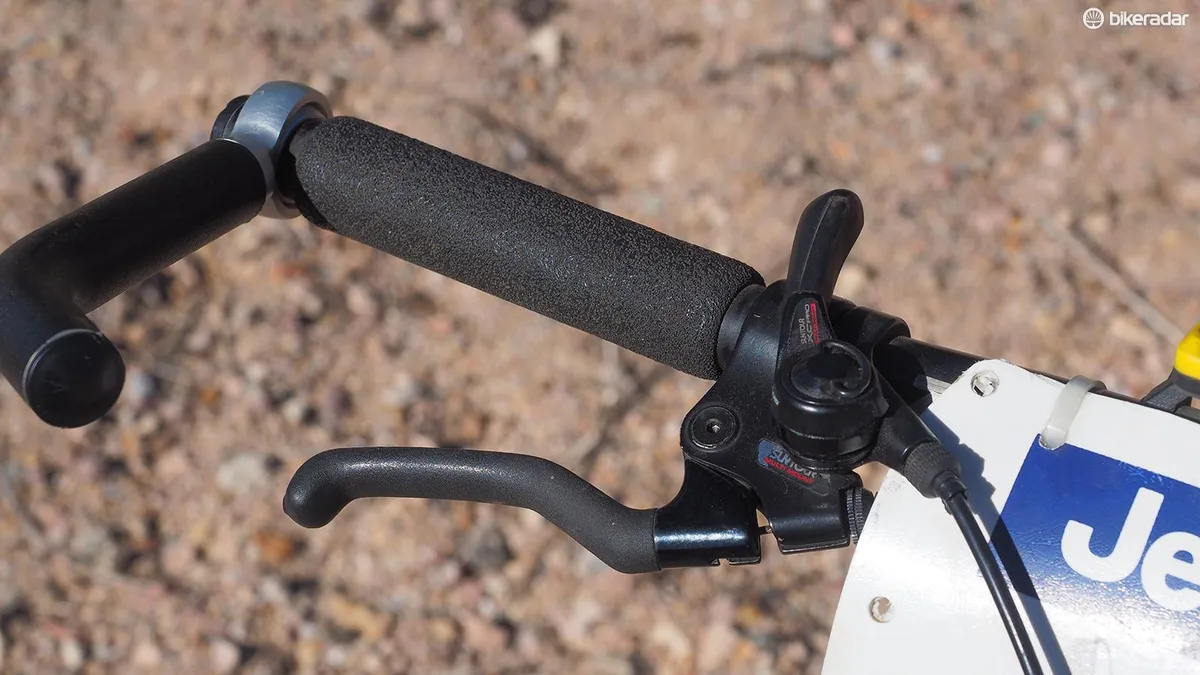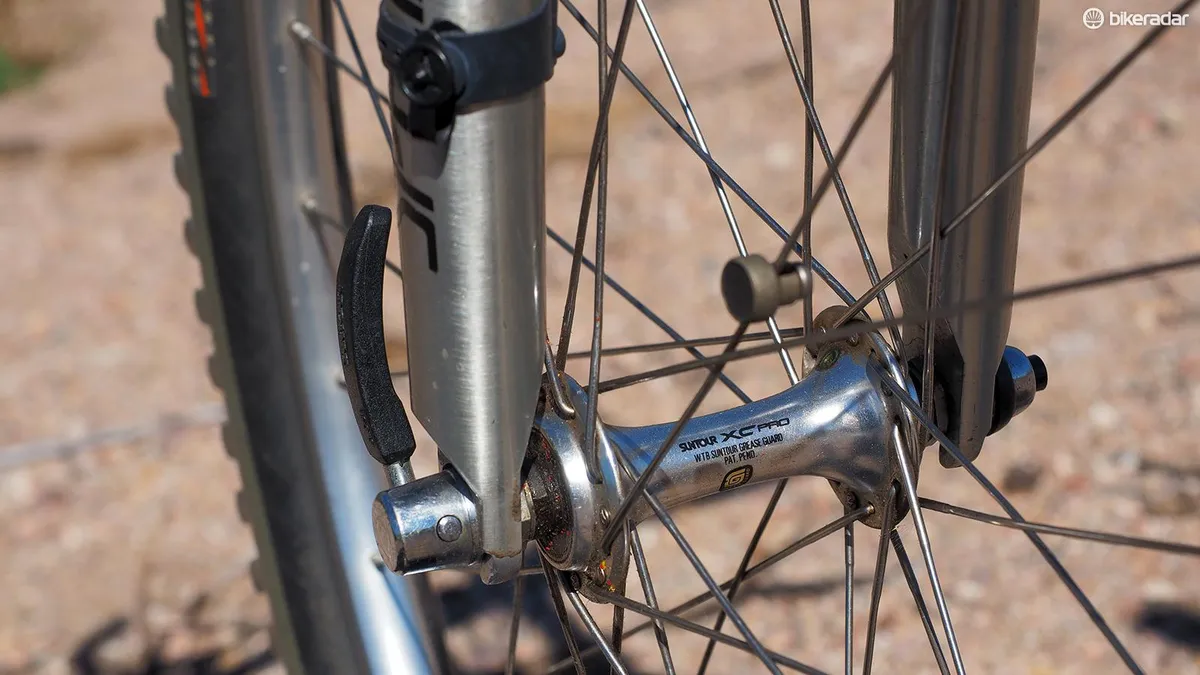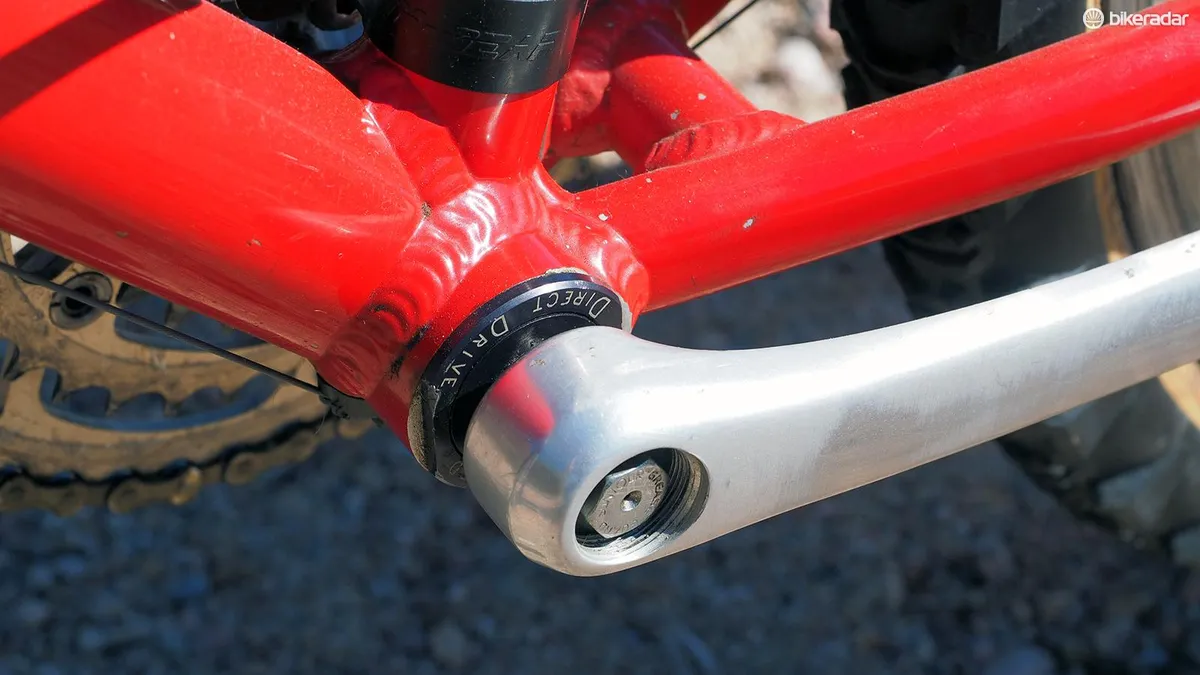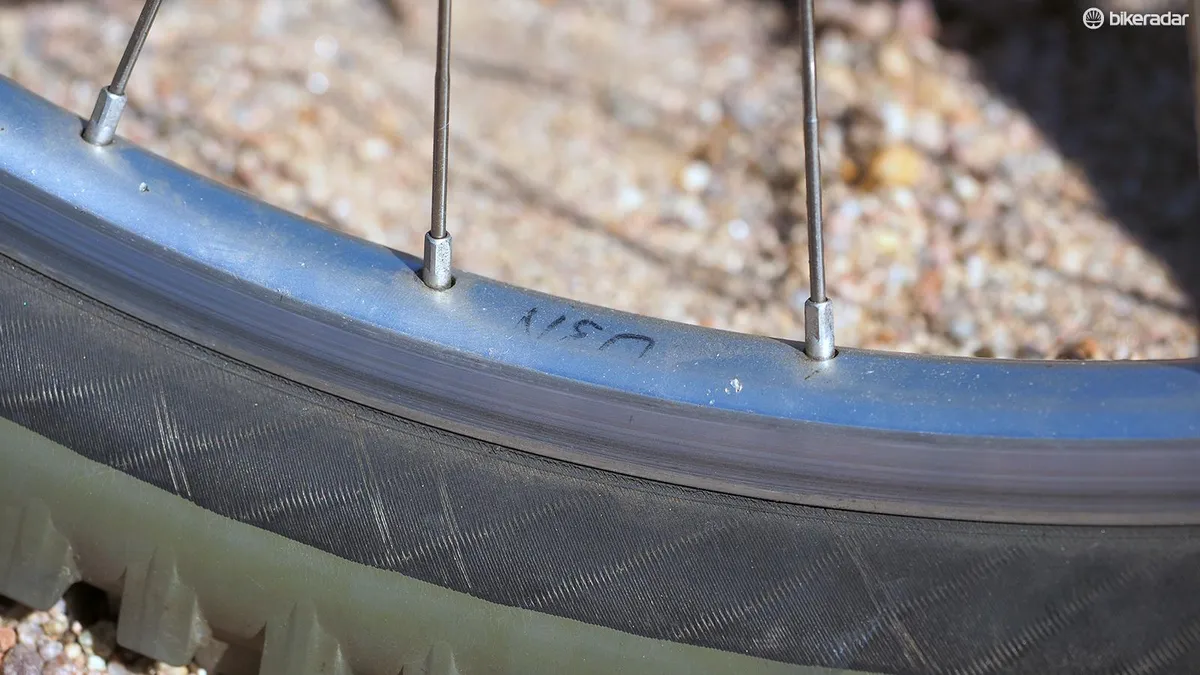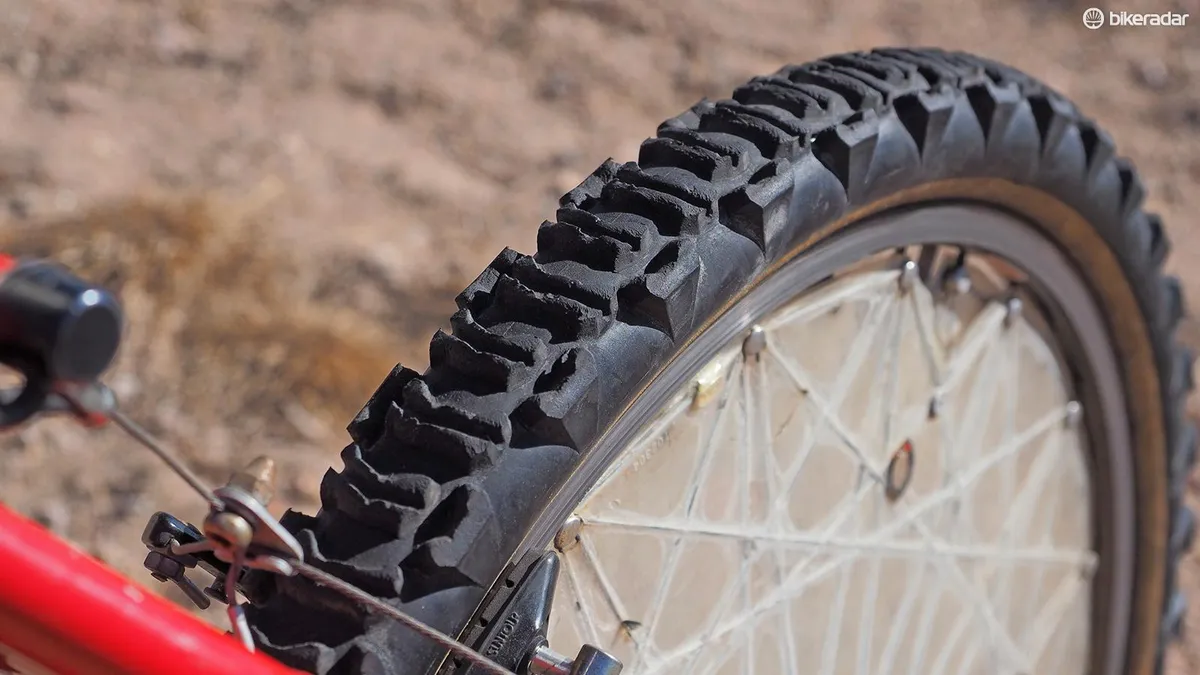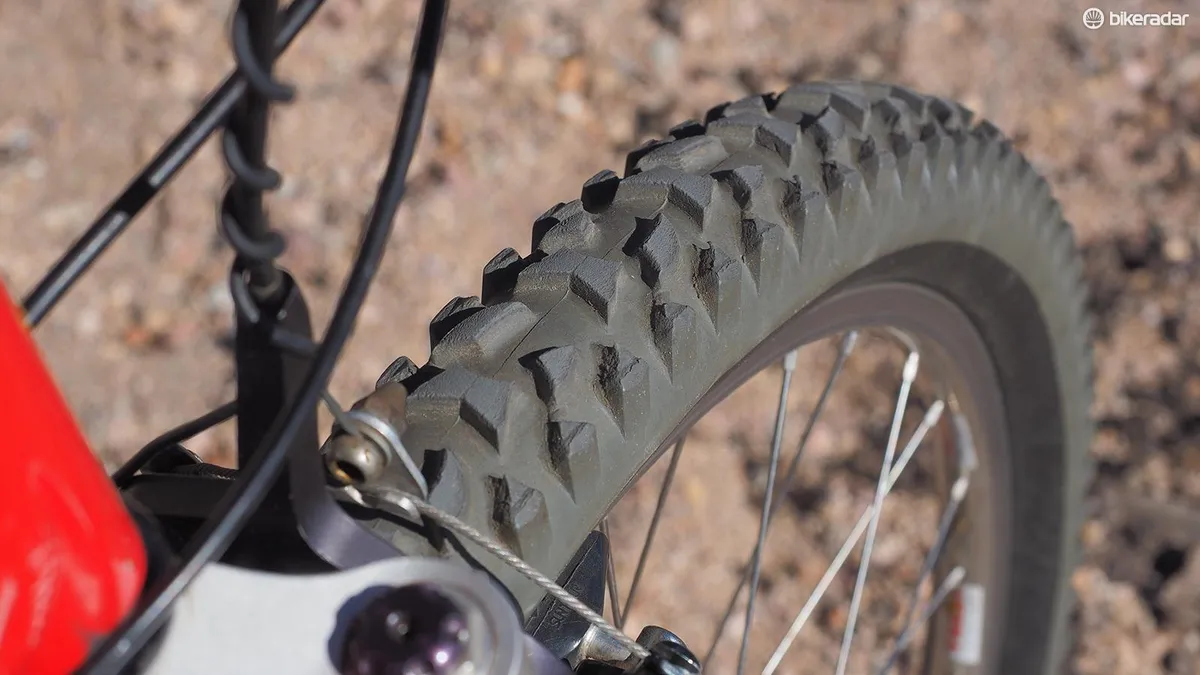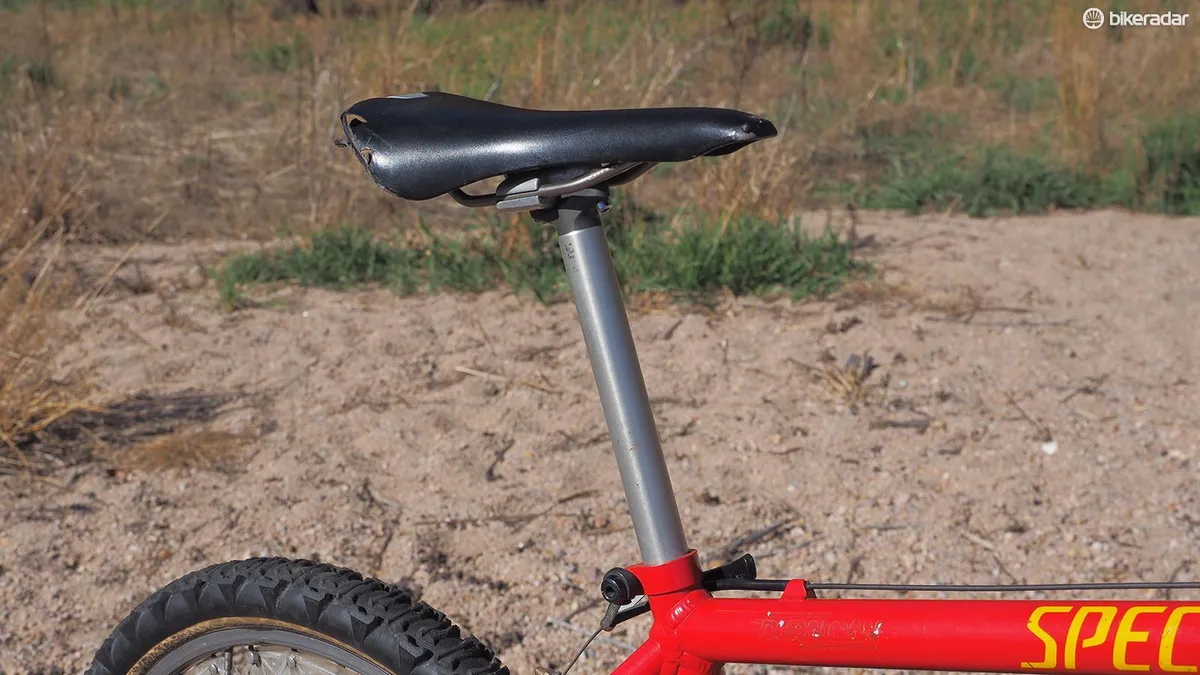The bicycle industry has seen its share of wonder materials come and go. In the early 1990s, Specialized pinned its hopes on metal matrix composite – 6061 alloy tubing reinforced with aluminum oxide ceramic particulate, supplied by Alcan and then marketed as ‘M2’. Like beryllium and magnesium, metal matrix didn’t quite stand the test of time – but not before racing legend Ned Overend piloted this shining example to heaps of cross country wins.
null
The draw of metal matrix was an understandable one. By dispersing small percentages of aluminum oxide ceramic powder during the alloying process, the resultant material would end up stiffer than the otherwise-standard aluminum upon which the composite was based, all while adding essentially zero weight. In practice, this would lead to lighter frames since less material was needed to maintain the same stiffness.
Less weight, the same stiffness, and a fancy buzzword to boot? Sign us up.
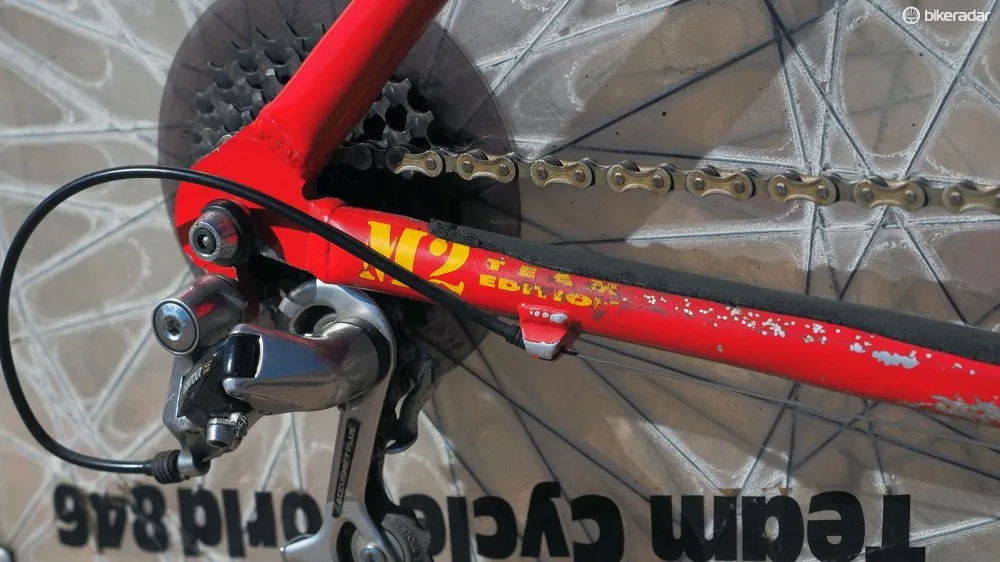
Specialized had high hopes for its 'M2' metal matrix frames back in the early 1990s
The problem, however, came in actually turning that potential into reality. Ceramic-reinforced metal matrix composites are notoriously hard on cutting tools, for example, and tubing supplier Alcan only offered its ‘Duralcan’ in a limited range of sizes, all of which were strictly round in profile and straight-walled. In the end, the high manufacturing costs and limited design flexibility doomed metal matrix as yet another ‘what could have been’ material.
M2 may have had a short lifespan but what a life it was, highlighted by the exploits of none other than Ned Overend, a native of Durango, Colorado who was then in the absolute prime of his racing career and the epitome of his nickname, ‘The Lung”.
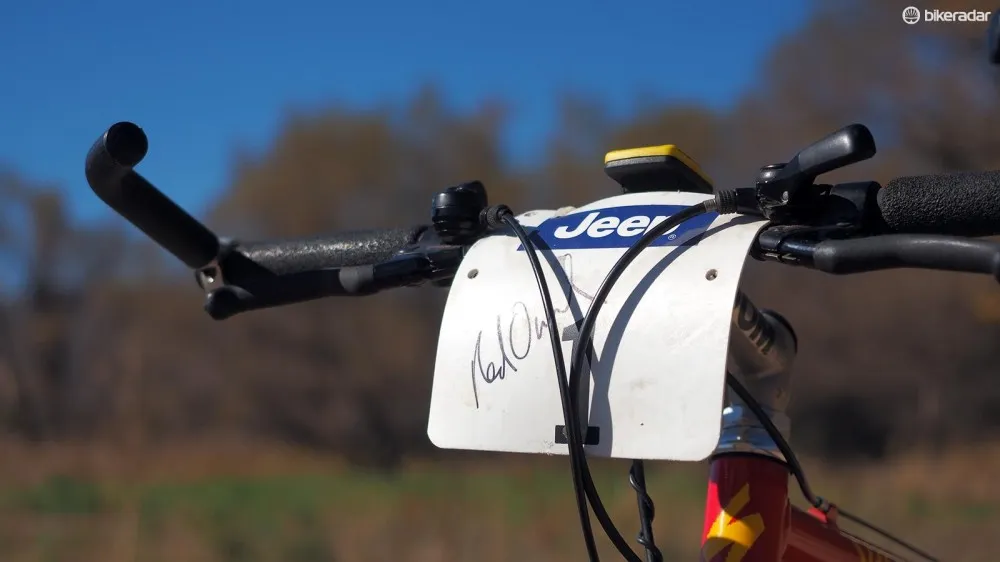
Overend certainly did well with this particular bike
Before the advent of M2, Overend had primarily been racing Specialized’s S-Works Ultimate, an ultra-exotic titanium and carbon machine that was renowned for its low weight and excellent ride quality but also its insanely exorbitant cost. According to Overend, Specialized was looking for a more cost effective alternative, and in M2 the company could supply a chassis that was deemed to be stiffer and more efficient – and therefore, at least in theory, faster.
Overend says the M2 frame was indeed super stiff but the addition of suspension fork up front (he used a rigid fork on the Ultimate) and the soft-riding tension disc out back tempered that somewhat.
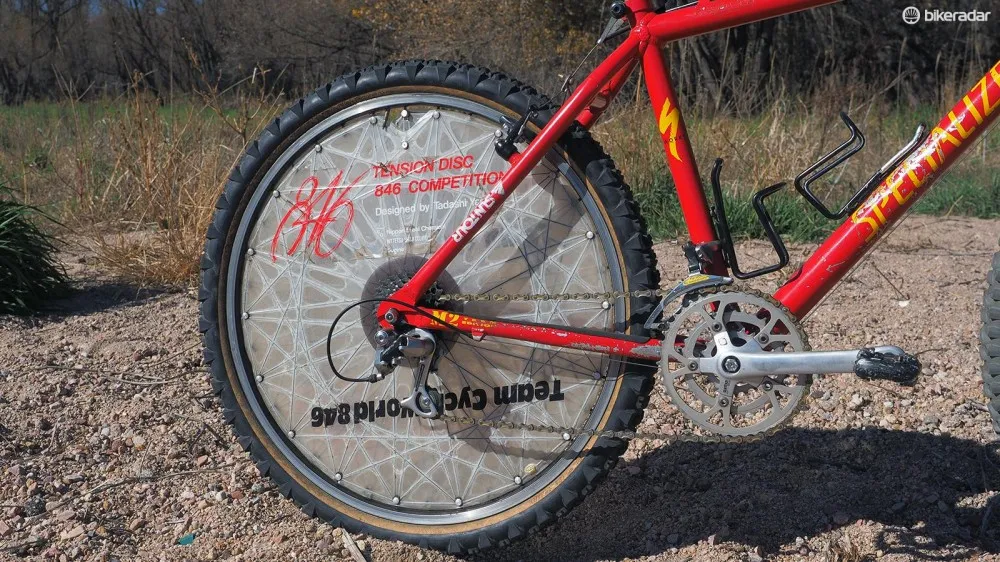
If we had to choose a single component that epitomized XC racing in the early 1990s, this would be it
Speaking of that crazy disc wheel, what exactly was the appeal back then, you might wonder? Proponents claimed the built-in pseudo-suspension provided by the unique Kevlar lacing profile lent a smoother ride and better traction on rough ground (and had this been a more modern construct, there would assuredly be some mention of aerodynamics). And of course, there was no escaping the distinct sound it made as it rumbled across the earth.
“Those bikes had a harsh ride and for sure, that wheel flexed a little,” Overend said. “For me, I think it softened up the roughness of the descents.”
Overend does admit with a chuckle, though, that the biggest reason for using it was far more practical.
“It was money. I think I got fifty grand [roughly $85,000 / £55,000 / AU$119,000 today when adjusting for inflation] for riding that disc – something crazy.”
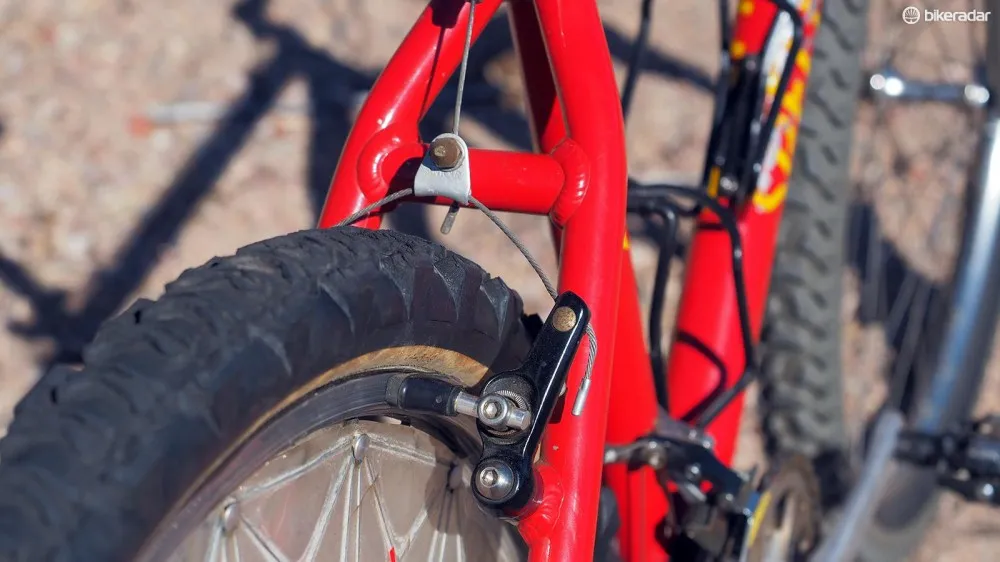
The brakes were basically just for show
Although comfortable, the tension disc’s flex unfortunately wasn’t limited to the radial direction. Brake rub was prevalent to the point where the pad setup had to be compromised to suit.
“In certain situations, like in a turn on a downhill and you were braking, and that thing flexed a certain way, the brake pad could actually fall underneath the rim. You had to make sure your pads were angled up a little bit and a little higher up on the rim toward the tire.”
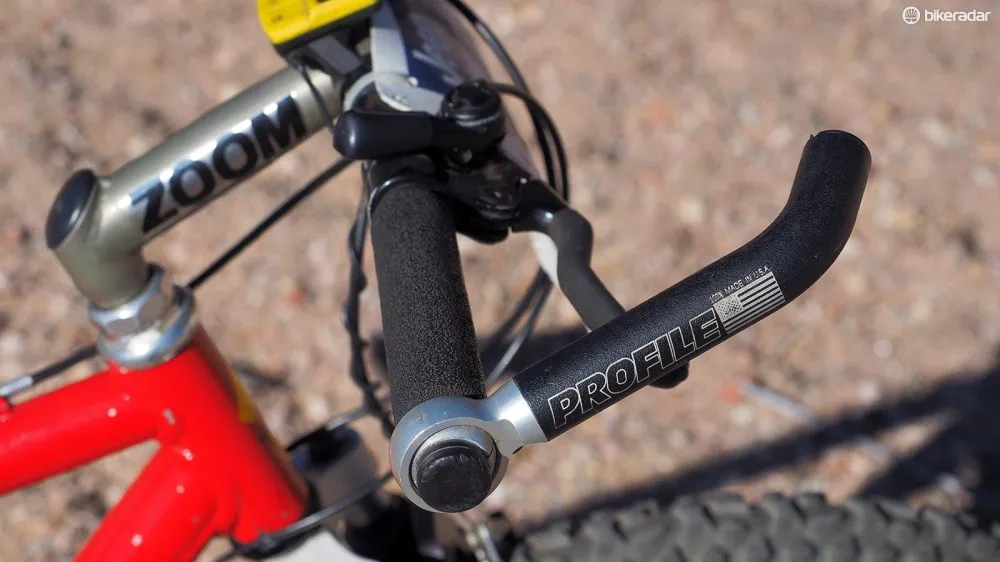
Overend was strongly associated with the Zoom and Profile brand names back in the day. Whatever they paid him was well worth the investment
Keep in mind, too, that those compromises were made on a braking system that already wasn’t exactly up to snuff.
“[Cantilevers] don’t stop. You’re so used to disc brakes and being able to keep control of your front end while you’re braking but these things – and especially these Suntour cantilevers – had, like, no power. It wasn’t so bad on courses like Mammoth and Big Bear but you get back east like Mount Snow on these super rough downhills where you’re also trying to have some brake finesse, and that’s where the performance of these brakes really hurt you. They were not one-finger brakes; these were two-finger brakes, and even then your forearms were getting fatigued on the downhills.”
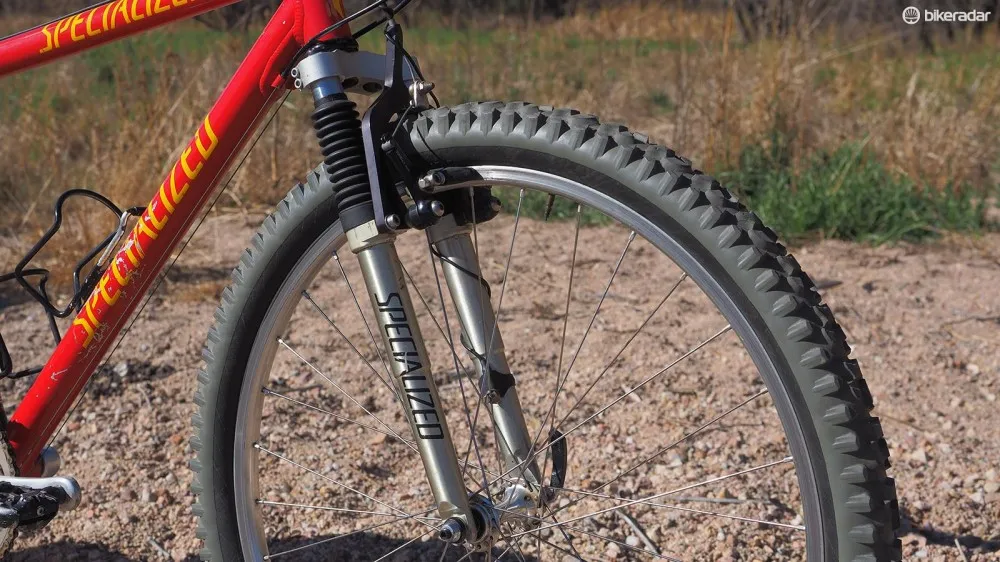
Back then, 50mm of suspension travel was considered quite generous
Overend looks back on those times fondly for lots of reasons but make no mistake; he likes modern equipment much, much better. When asked if there was anything in particular that he missed on his old bikes, he responds bluntly.
“No.”
Special thanks to the folks at The Pro's Closet, who currently curates a private museum of noteworthy vintage bikes at their headquarters in Boulder, Colorado.
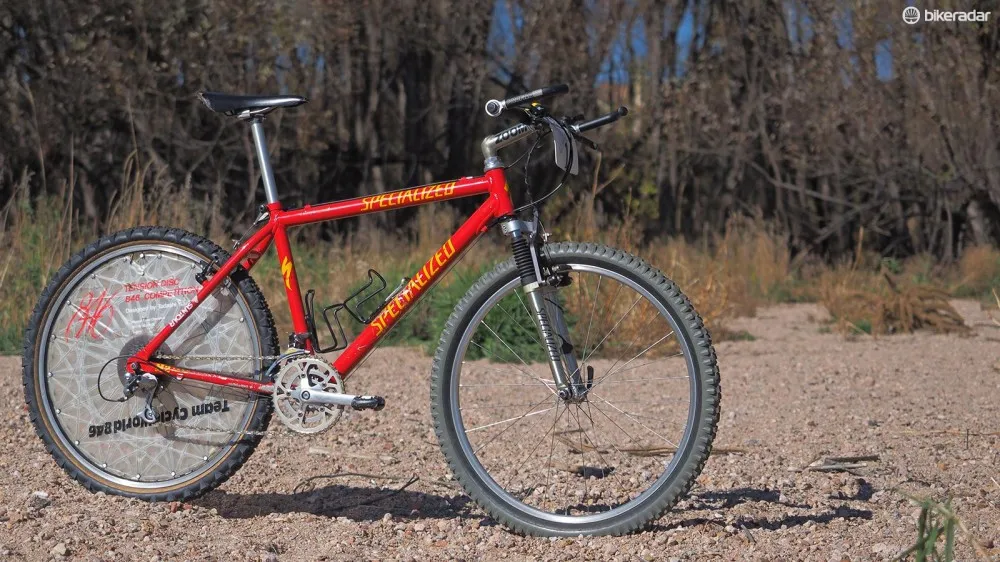
Complete bike specifications
- Frame: 1992 Specialized S-Works M2 Team Issue
- Fork: Specialized Future Shock
- Headset: Specialized, 1 1/8in threaded
- Stem: Zoom, 135mm x +6°
- Handlebars: Zoom alloy, 560mm, with Profile bar ends
- Grips: Grab-On foam
- Front brake: Suntour XC Pro
- Rear brake: Suntour XC Pro
- Brake levers: Suntour XC Pro
- Front derailleur: Suntour XC Pro
- Rear derailleur: Suntour XC Pro
- Shift levers: Suntour XC Pro
- Cassette: Suntour 7-speed, 11-28T
- Chain: Suntour
- Crankset: Suntour XC Pro Microdrive, 175mm, 22/32/44T
- Bottom bracket: Specialized Direct Drive Titanium
- Front rim: Specialized TXL21, 32-hole
- Rear rim: Specialized GX23, 36-hole
- Front hub: Suntour XC Pro Grease Guard
- Rear hub: Sugino Tension Disc 846
- Front tire: Specialized Cannibal Umma Gumma, 26x2.2in
- Rear tire: Specialized Ground Control More Extreme, 26x1.95in
- Saddle: Vetta SL
- Seatpost: Suntour XC Pro
- Pedals: Shimano PD-M737
- Other accessories: Ciclomaster CM37 computer, N-Gear chain watcher, Specialized alloy bottle cages (2)
- Weight: 12.25kg (27.00lb, complete, as pictured)
